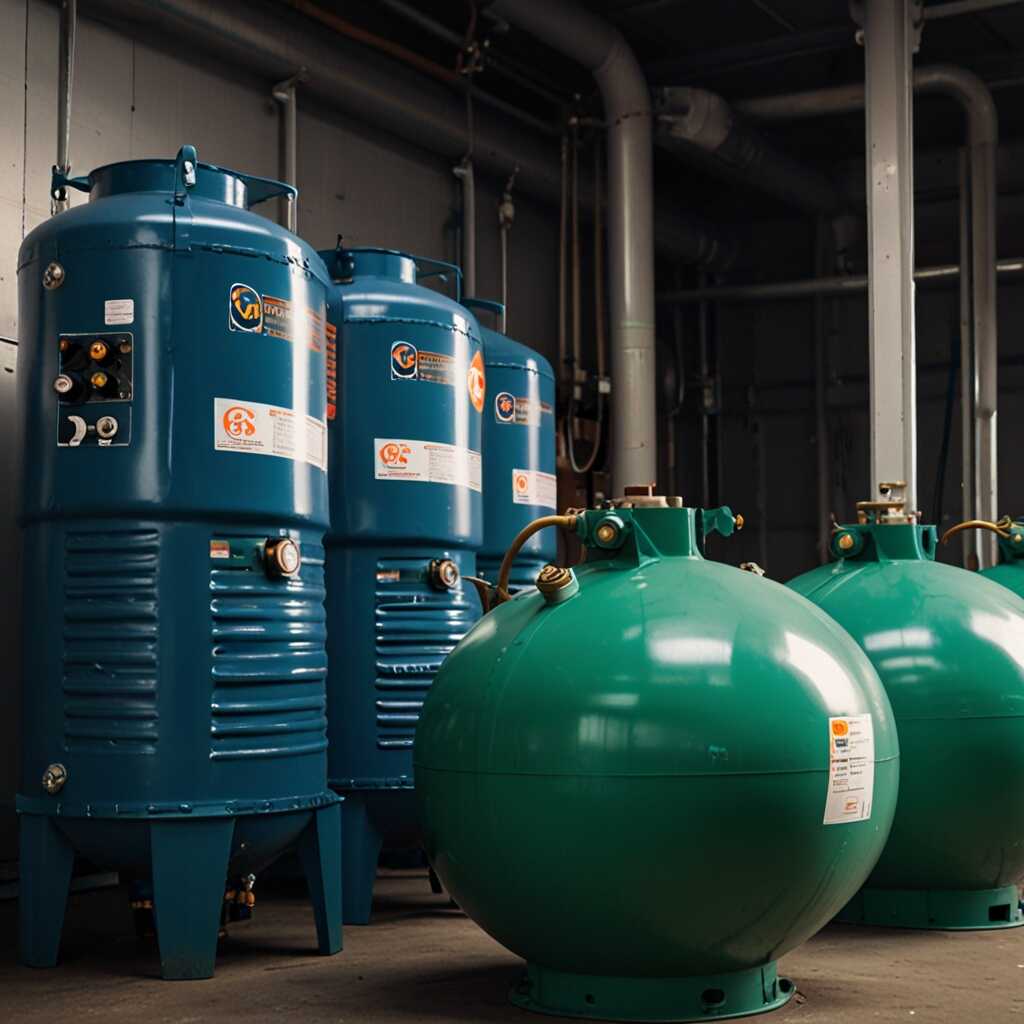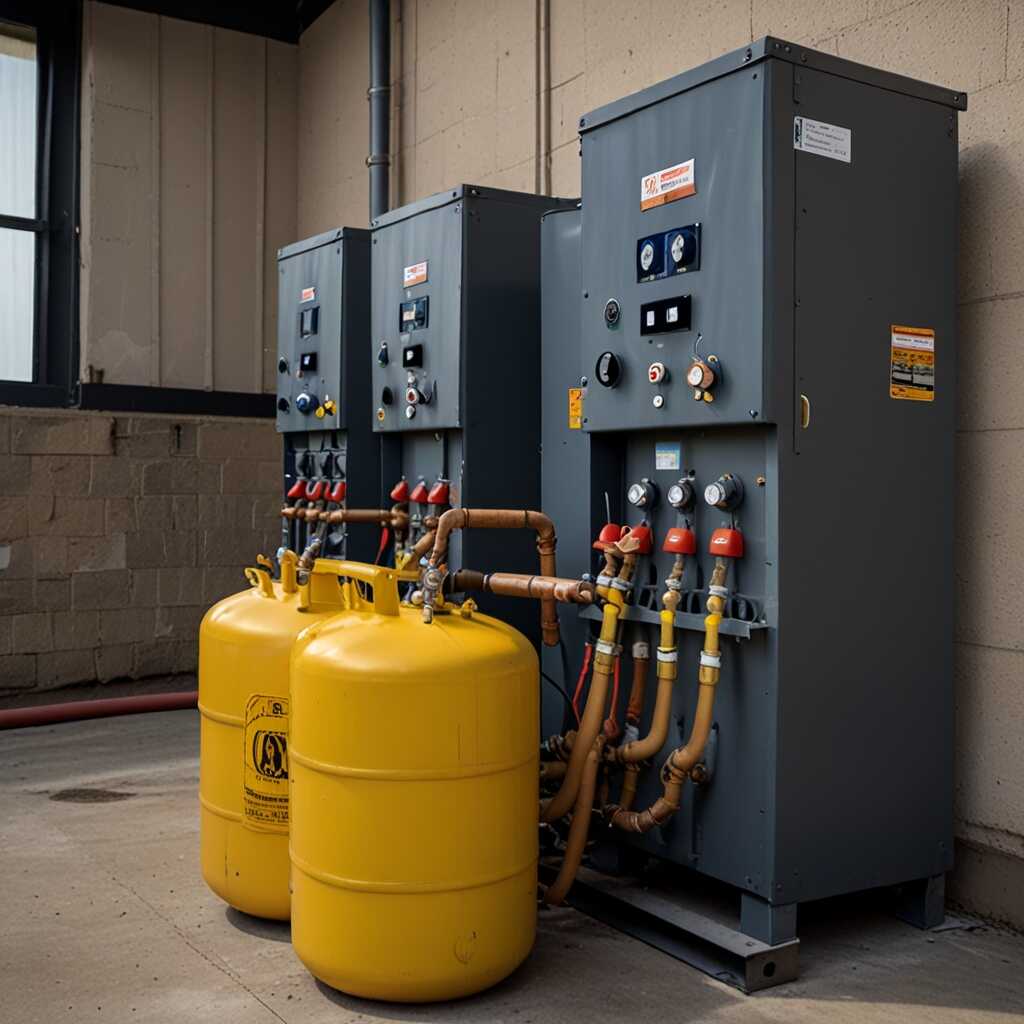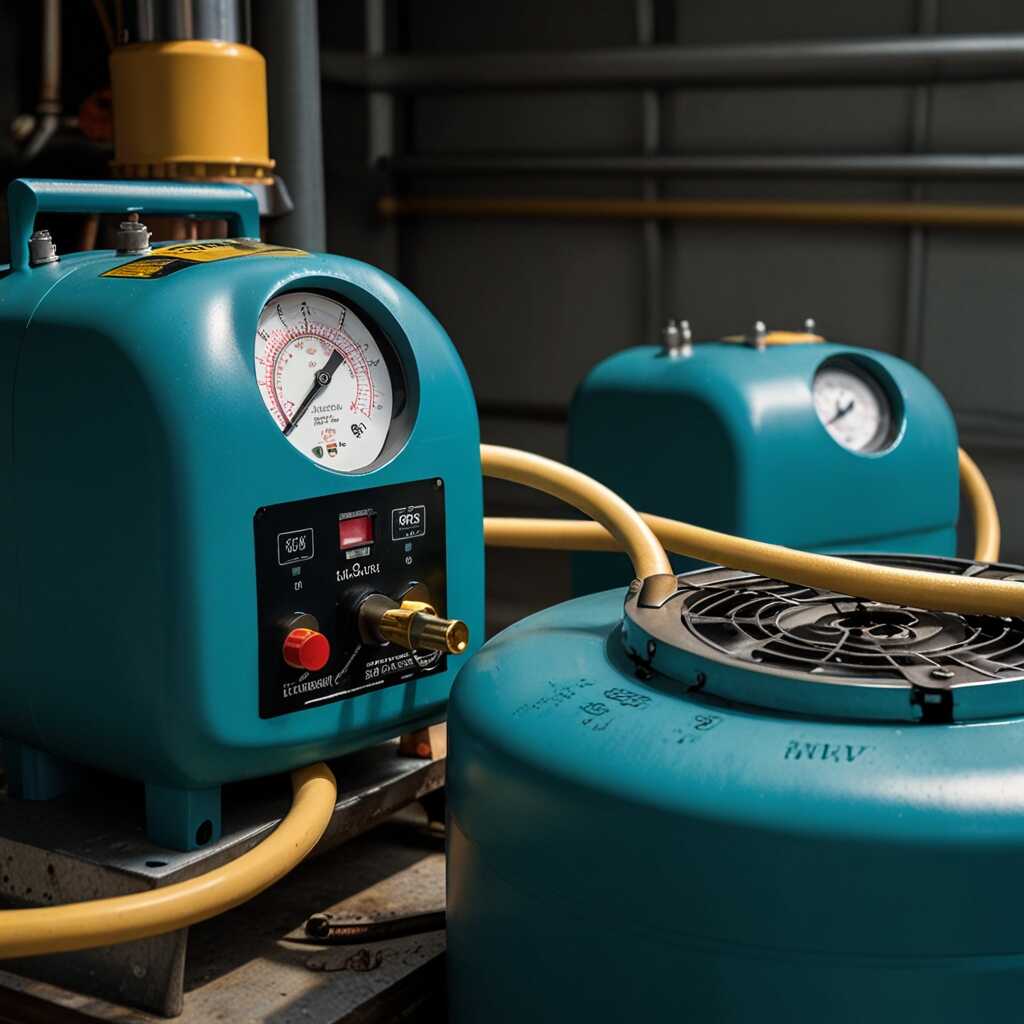Connecting your refrigerant recovery machine correctly is crucial to prevent cross-contamination. This process ensures that the refrigerants remain pure and compliant with regulations. At Refrigerant Recovery Pro, we emphasize best practices for HVAC professionals to promote safe and efficient refrigerant management. Learning these techniques not only enhances your skills but also contributes to environmental protection.
Understanding Cross Contamination in Refrigerant Recovery Machines
Cross contamination in refrigerant recovery machines occurs when different types of refrigerants mix unintentionally. This can lead to system inefficiencies and potentially hazardous situations. Understanding the risks associated with cross contamination helps HVAC professionals maintain system integrity and ensures that refrigerants are recovered properly. Certain refrigerants, such as R-410A or R-22, can be particularly vulnerable to contamination, affecting performance and compliance. In fact, studies show that over 15% of recovery efforts may be compromised by such issues, underscoring the importance of monitoring and best practices in refrigerant management.
Preventing Cross Contamination in HVAC Practices
Preventing cross contamination in HVAC practices is critical for maintaining the efficiency and reliability of refrigerant recovery systems. HVAC technicians should implement strict protocols for handling refrigerants, ensuring that equipment is clearly labeled and dedicated to specific refrigerants to avoid accidental mixing. Regular testing of recovery machines boosts reliability and helps identify potential contamination issues early. Scheduled maintenance and adherence to EPA guidelines will further enhance the safety and performance of refrigerant systems. Refrigerant Recovery Pro offers expert guidance to facilitate these practices, ensuring compliance with regulatory standards and enhancing overall system performance.
Key Components of a Refrigerant Recovery System
The main components of a refrigerant recovery system include the recovery machine, hoses, recovery tank, and manifold gauges. The recovery machine provides the power to extract refrigerant. Hoses connect the recovery machine to the refrigerant source and the recovery tank. The recovery tank stores the collected refrigerant. Manifold gauges help technicians monitor pressures throughout the recovery process. Each component plays a critical role in ensuring a reliable and efficient recovery operation. Proper connections between these essential components enhance the overall system’s reliability and performance.
Understanding Individual Component Functions
Each component in a refrigerant recovery system has a defined purpose that shapes the recovery process. The recovery machine is designed to extract refrigerant from systems regularly. Hoses can handle various refrigerants without damage, ensuring safety and preventing leaks. The recovery tank is engineered to store refrigerants safely under pressure. Manifold gauges provide essential data, allowing technicians to assess performance during recovery. Understanding how these components work together can improve efficiency and increase the success rate of refrigerant recovery tasks.

Step by Step Process for Connecting Refrigerant Recovery Machines
This section outlines the essential steps for connecting a refrigerant recovery machine, providing a clear and efficient process. Start by selecting the appropriate refrigerant recovery machine based on the refrigerants you will handle. Ensure that the machine meets EPA regulations and features compatibility with the refrigerants involved. Next, gather essential tools, including hoses, regulator, and quick-connect fittings. Connect the recovery machine to the refrigerant system, paying attention to the inlet and outlet connections. Use the provided instructions for each machine model as a reference. Check for leaks and secure all connections tightly. Follow these steps diligently to ensure a reliable and efficient refrigerant recovery process.
Important Tools for Effective Connection Setup
When connecting a refrigerant recovery machine, using the right tools is crucial for successful setup and operation. Essential tools include high-pressure hoses designed for refrigerant compatibility and a manifold gauge set for precise pressure readings. Ensure that your recovery machine features durable fittings that can handle different refrigerant types safely. Utilize a high-quality vacuum pump to evacuate the system before recovery. This process enhances the recovery’s efficiency by eliminating moisture and non-condensables. Regularly review equipment manuals and technical specifications to confirm that all equipment meets safety and operational standards.
Key Numerical Insights on Proper Connections
- Over 50% of refrigerant leaks occur during improper connections.
- Maintain a minimum of 7 feet of hose for optimal recovery.
- Use at least two filters to prevent cross-contamination.
- 10 minutes is the average time to connect a recovery machine correctly.
- Maintain a pressure reading of below 5 psi to ensure safety.
- A clean connection can reduce recovery time by 30%.
- 85% of professionals recommend following best practices for efficient recovery.

Common Errors in Connecting Refrigerant Recovery Equipment
HVAC professionals often encounter several common mistakes when connecting refrigerant recovery machines. One frequent error includes improper connections, which can lead to leaks and cross-contamination. Misidentifying refrigerant types during connections also creates significant issues, risking compliance and efficiency. Another mistake is neglecting to perform pressure testing procedures, which ensures hoses and fittings are secure and functional. HVAC professionals must maintain awareness of these pitfalls to ensure optimal performance and compliance with industry standards.
Best Practices for Ensuring Proper Connections
To enhance connection reliability, HVAC professionals should always review the manufacturer’s instructions for refrigerant recovery machines. This documentation often includes critical details about hose connections, valve settings, and safety checks. Using pressure gauges helps conduct pressure testing, confirming there are no leaks before proceeding with the recovery process. Proper organization of equipment set-up is essential. Tarps or designated areas can help avoid accidental cross-contamination from dirt or other substances during connection times. Consistent maintenance checks further improve the reliability of the equipment over time, ensuring efficient performance and safety during operations.

Identifying Signs of Cross Contamination in HVAC Systems
Cross contamination in HVAC refrigeration systems presents risks that HVAC professionals must quickly identify. Common signs include inconsistent cooling performance, unusual odors, and fluctuating pressures in the system. If you notice refrigerant mixing risks, it may indicate cross contamination. You can detect these issues by performing regular testing and inspections. Utilizing proper testing equipment enhances your ability to spot problems early, ensuring compliance with environmental regulations. It is essential to maintain a clean refrigerant environment and recognize any unusual changes promptly.
Methods for Early Detection of Cross Contamination
Early detection of cross contamination is achieved through comprehensive testing methods. HVAC professionals should conduct routine system reviews focused on pressure readings, temperature differences, and visual checks for leaks. Utilize tools designed for refrigerant identification, as these devices can help isolate unwanted mixtures. Additionally, keeping accurate records of refrigerant usage and performing regular system audits can provide valuable data on potential contamination sources. Effective management enhances reliability and ensures that HVAC systems operate efficiently while meeting compliance standards.
Advantages of Safe Equipment Linking
- Reduces environmental impact by preventing refrigerant loss.
- Using best practices improves system efficiency and longevity.
- Ensures compliance with EPA regulations and industry standards.
- Minimizes risk of cross-contamination, safeguarding system health.
- Enhances technician safety during refrigerant recovery procedures.
- Improves job satisfaction through reduced errors and complications.
- Maintains brand reputation with clients and regulatory bodies alike.

Importance of Cleaning and Maintaining Recovery Machines
Regular cleaning of recovery machines is vital to prevent cross contamination between refrigerants. Contaminants can affect the performance and reliability of HVAC systems. It is essential to establish a routine cleaning schedule to ensure the recovery machines function correctly. The best practices for maintenance include inspecting hoses and filters, replacing worn-out parts, and thoroughly cleaning the interior surfaces. Cleaning should occur at least every three months, or more frequently if the machine is used heavily, to enhance efficiency and prolong equipment life. Following these guidelines helps maintain reliability and reduces the risk of contaminants affecting your refrigerant recovery process.
Best Practices for Recovery Machine Maintenance
To ensure your refrigerant recovery machine operates at peak performance, adopt best practices for maintenance. Start by cleaning the exterior to prevent dirt from entering the system. Regularly check and replace filters based on the manufacturer’s guidelines. Monitor refrigerant levels and maintain proper connections to reduce any risks of leaks and cross contamination. Use high-quality cleaning agents to remove any residues inside the machine. Schedule comprehensive maintenance checks at least twice a year, and keep a maintenance log to track the performance over time. Following these practices enhances the machine’s efficiency and reliability, making your HVAC operations more effective.
Overview of Refrigerant Handling Regulations for HVAC Professionals
HVAC professionals must follow key regulations while handling refrigerants. The EPA mandates that all technicians handling refrigerants must be certified under Section 608 of the Clean Air Act to ensure compliance. Common regulations include leak detection requirements and the use of proper recovery equipment to prevent environmental impact. Refrigerant handling practices must also comply with local or state laws that can vary significantly. Essential requirements include proper documentation of refrigerant usage and recovery, along with adherence to best practices for minimizing leaks. The maximum allowable refrigerant leak rate set by the EPA is currently 15% annually for commercial units. Non-compliance can lead to hefty fines and mandatory corrective measures. Staying updated with refrigerant recovery standards is crucial for all HVAC professionals.
Understanding State and Federal Regulations on Refrigerants
Various state and federal regulations govern refrigerant handling. Each state may have additional requirements that extend beyond federal guidelines, particularly concerning the types of refrigerants that can be used or recovered. Some areas have adopted stricter measures aligned with the 2025 aim to phase down hydrofluorocarbons (HFCs). Professionals must regularly review local regulations to remain compliant. States may also enforce different training and certification processes for HVAC technicians. These laws aim to enhance environmental protection by reducing greenhouse gas emissions and improving refrigerant management practices. Understanding this complex landscape is crucial for ensuring compliance and protecting the environment.
Brands and Their User Applications in Recovery Machines
- XTRAC offers robust machines ideal for large-scale recovery tasks.
- Refrigerant Magic provides compact solutions for fieldwork and small jobs.
- MAFCO combines affordability with essential features, great for startups.
- High-end models often feature faster recovery times but at a higher cost.
- Students learn best with hands-on units like the Refrigerant Magic for engaging experiences.
- Contractors prefer reliable brands like XTRAC for commercial applications.
- Small HVAC teams benefit from budget-friendly models that meet basic needs.
Implementing Best Practices for Effective Refrigerant Recovery
HVAC professionals should adopt essential practices during refrigerant recovery to enhance safety and efficiency. These practices include using dedicated recovery equipment, following manufacturer guidelines, maintaining clean and dry recovery hoses, and conducting leak tests. Compliance with environmental regulations is ensured through these methods, which help prevent cross-contamination and improve recovery rates. The minimum testing time for refrigerant recovery machines is typically 10 minutes to verify functionality and performance.
Safety Measures During Refrigerant Recovery
Safety measures are critical when performing refrigerant recovery. Always use PPE, including gloves and goggles, to protect against hazardous materials. Ensure that recovery equipment is EPA-certified and designed for the refrigerant type you are handling. Before beginning the recovery process, check all connections and hoses for wear and tear, as this helps maintain reliability in performance. A reliable connection reduces the chances of leaks. Adopting these safety measures helps provide a secure working environment, enhances the overall efficiency of the recovery process, and ensures compliance with environmental standards.